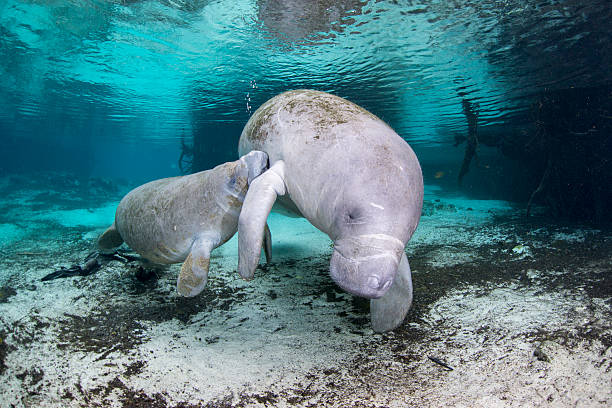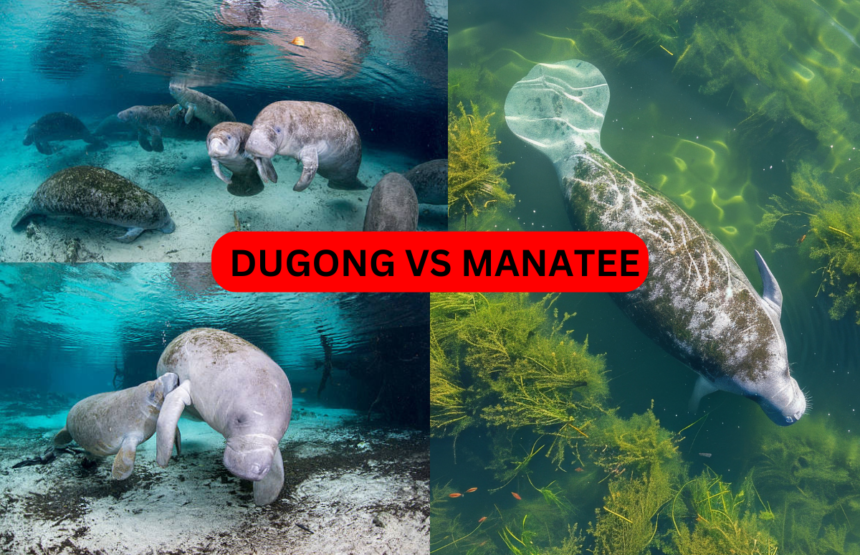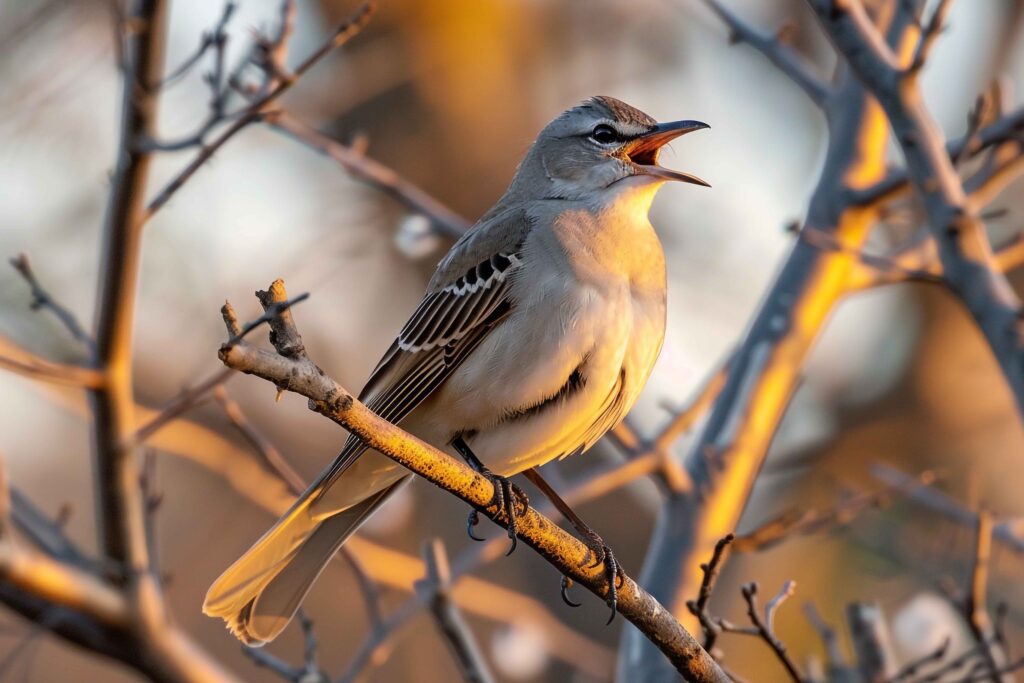dugong vs manatee
The dugong and the manatee are marine mammals known as “sea cows.” They belong to the order Sirenia. These two species look similar but have different physical traits, habitats, and challenges. This article will explore the fascinating differences between the dugong and the manatee.

Dugong vs Manatee: Physical Traits
Dugong vs Manatee: Physical Traits
Dugongs and manatees are marine mammals with unique physical traits. Knowing these differences helps us tell them apart.
Dugongs are bigger than manatees. Adult dugongs can be up to 3 meters long and weigh over 400 kilograms. Manatees are smaller, reaching 4 meters in length and weighing 600 kilograms.
Dugongs have a sleek, torpedo shape for moving in coastal waters. Manatees have a rounder body, perfect for their freshwater and brackish habitats.
| Physical Trait | Dugong | Manatee |
|---|---|---|
| Average Length | 3 meters (10 feet) | 4 meters (13 feet) |
| Average Weight | Over 400 kg (880 lbs) | 600 kg (1,320 lbs) |
| Body Shape | Streamlined, torpedo-like | Rounded, barrel-like |
Dugongs and manatees also have different skin. Dugongs have smooth, gray-brown skin with barnacles. Manatees have thick, wrinkled skin that’s often covered in algae.
These physical traits show how dugongs and manatees adapt to their environments. They highlight the special features of these marine mammals.
Habitat and Distribution
Dugongs and manatees, known as sea cows, live in different but beautiful places around the world. Knowing where they like to be is key to saving them.
Dugong’s Coastal Habitats
Dugongs live only in coastal habitats in the Indo-Pacific area. They love shallow, warm waters in East Africa, the Middle East, Southeast Asia, and northern Australia. They stay in seagrass beds in safe spots like bays and lagoons. This is where they find their main food.
Manatee’s Freshwater and Marine Environments
Manatees, on the other hand, live in many freshwater and marine environments. They can be found in rivers, estuaries, saltwater bays, and coastal areas in the southeastern United States, the Caribbean, and parts of Central and South America. Manatees can handle both freshwater and saltwater habitats, moving between them as needed.
Dugongs and manatees have different homes, showing how important marine environments and coastal habitats are for them. Saving these places is vital for these amazing creatures.
Diet and Feeding Behavior
Dugongs and manatees are unique marine mammals with special diets and feeding ways. Knowing these differences helps us understand their roles in their ecosystems.
Grazing Habits of Dugongs
Dugongs are herbivores, eating mainly seagrasses in shallow coastal waters. They use their big flippers to pull up and eat seagrass leaves and stems. Their teeth grow all their lives, perfect for grazing.
They are like “marine gardeners,” keeping seagrass beds healthy. They eat up to 40 kilograms of seagrass daily. This helps the marine ecosystem grow and thrive.
| Characteristic | Dugongs | Manatees |
|---|---|---|
| Diet | Primarily seagrasses | Varied, including aquatic plants, algae, and some terrestrial vegetation |
| Feeding Behavior | Specialized grazing on seagrasses | Browsing and foraging in both freshwater and marine environments |
| Habitat Preference | Shallow coastal waters with seagrass beds | Freshwater rivers, estuaries, and coastal marine areas |
Manatees eat a variety of plants, algae, and some land plants. They browse and forage in both fresh and saltwater. This shows their ability to adapt to different places.

Reproduction and Lifespan
Dugong Reproduction
Some of the reproductive characteristics that make diving more vulnerable include the slow reproductive cycle where females only produce a single offspring at intervals of between 3-7 years and after taking a pregnancy period of 13 months. Dairy calves are as a result dependent on their mothers till as long as two years. The life span in wild dugong is found to be around 70 years but because of slow reproductive cycle and environmental specificity, the species is under threat all the time.
Manatee Reproduction
Reproduction cycle of the manatees is also slow with females producing one calf after two to five years of gestation. Gestation period of manatee is 12 months and the suckling of the calf is 1-2 years. You may be surprised to know that, indeed wildlife representatives estimate that manatees can survive for over 60 years. However, similar to dugongs, they are has faced threats of their habitat in the regions and human interference.
Conservation Status
Dugongs
Dugongs are categorized as vulnerable species by IUCN who are looking into the conservation of nature. Some of their major risks are living habitat, hunting and getting captured in nets. Current management strategies are mainly aimed at preserving the seagrass beds and minimising anthropogenic mortality factors.
Manatees
Manatees are also threatened and the West Indian manatee itself is now a threatened species according to the U. S Endangered species Act. Currently the major threats to these mammals include loss of habitat, boat propeller related injuries and entanglement in fishing gear. Stepped up measures such as; restricted boat speed limits, protection of manatee habitats, and conductance of educative sessions to increase awareness of the public regarding the plight of manatees have been put in place.
Conclusion
While dugongs and manatees share many similarities, they are distinct species with different physical characteristics, behaviors, and habitats. Dugongs are more closely tied to marine environments and have a specialized diet of seagrass, while manatees are more adaptable, inhabiting both freshwater and marine environments with a broader diet. Understanding these differences is crucial for the conservation of both species, as they face significant threats from human activities and environmental changes.








